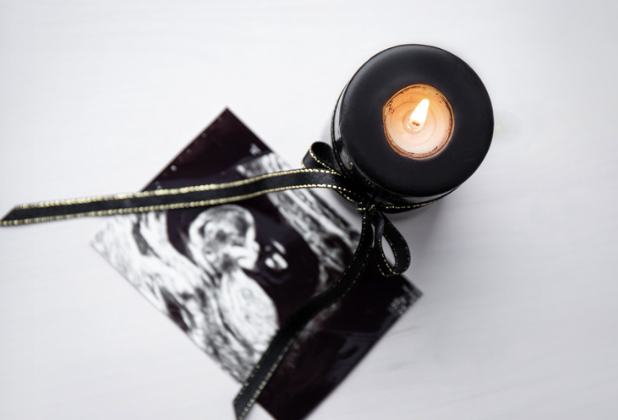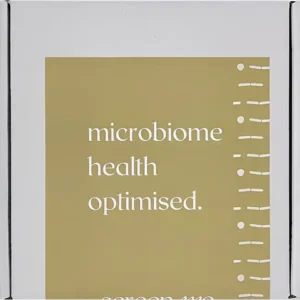Approximately 15% of clinically recognised pregnancies end in miscarriage. Chromosomal problems account for around half of these pregnancies but for the other 50% the reason has been mostly unknown[1]. Therefore, it is really important for research to try and understand why this may be the case, so that we can prevent such.
New science suggests that unbalanced vaginal microbiome may play a role in miscarriage, and conversely, a balanced vaginal microbiome may prevent miscarriage in the first trimester.
An unbalanced vaginal microbiome [also known as vaginal dysbiosis] has been associated with a range of fertility and pregnancy concerns including:
- Miscarriage
- Preterm birth
- Unexplained infertility
- Low IVF success
What is the vaginal microbiome?
The vaginal microbiome refers to the various microscopic beings living around the vagina. These include:
- Fungi
- Bacteria
- Viruses
- Yeast
- Archaea
Although there are several different types of bacteria living in the vagina Lactobacilli are the most important. Have you heard about how the vagina is self-cleaning? Well, that’s thanks to the Lactobacilli. Lactobacilli are the gate keepers to your vagina; they produce lactic acid and hydrogen peroxide that help regulate the pH of the vagina keeping it at about 3.8-4.5. The acidic environment makes the vagina inhospitable for harmful pathogens like E.coli, Steph and Candida. Lactobacilli are also the good guys responsible for fighting infections like thrush and BV.
Vaginal microbiomes have been grouped into 5 main community state-types (CST), which are:
- TYPE 1:
- Lactobacillus crispatus dominates
- Usually protective
- TYPE 2:
- Lactobacillus gasseri dominates
- Usually protective (although slightly less than Type 1)
- TYPE 3:
- Lactobacillus iners dominates
- Usually neutral — could be protective or disruptive
- TYPE 4:
- No Lactobacillus dominates
- Usually disruptive
- TYPE 5:
- Lactobacillus jensenii dominates
- Usually protective
Note: when discussing the vaginal microbiome, we will often reference the relative amounts of bacteria present. This means the percentage of the specific bacteria which make up the vaginal microbiome. In general terms, we want a 95% or over percentage of the vaginal microbiome to be comprised of ‘good’ bacteria in order to indicate a balanced environment.
We use relative amount rather than simply presence of specific bacteria, as this is what research uses in its studies and tests. This is also what the ScreenMe Vaginal Health swab tests look for (rather than other methods such as PCR and swabs — which indicate only the presence of specific selected bacteria).
What affects Lactobacillus?
There are many aspects which influence the vaginal microbiome. These include:
- Hormonal balance
- Diet
- Lifestyle choices — such as contraception, hygiene, and sexual habits
- Infections
- Medical treatments
- Supplements such as probiotics
- Age
- Genetic factors
So, the good news is that your vaginal microbiome is able to be changed. There are steps you can take to move from vaginal dysbiosis to vaginal balance — and improve your chances of carrying to term at the same time.
What does the vaginal microbiome have to do with pregnancy & miscarriage?
- Relative amounts of Lactobacillus
- Research has shown that women with healthy pregnancies have vaginal microbiome that are rich in Lactobacillus and low in diversity compared to women who have experience recurrent miscarriage or miscarriage[2]. It is believed that high levels of Lactobacillus in pregnancy protect against genital infections and regulate the immune system both of which are a common cause of miscarriage[3].
- In comparison, researchers have linked low amount of vaginal Lactobacillus to pregnancy complications such as early-stage miscarriage, premature rapturing of membranes and preterm birth.
2. High diversity
- Studies have linked a higher diversity of bacteria in the vaginal microbiome to greater risk of miscarriage[4].
3. Presence of specific bacteria species
- In particular, the presence of specific bacteria species have been associated with higher miscarriage rates including:
- Group B Streptococcus[5]
- Atopobium, Prevotella, Ureaplasma[6]
4. Immune response
- The vaginal microbiome has a key role in immune system regulation within the female reproductive system[7]. A poorly functioning immune system in the vaginal environment can be raise the miscarriage risk through higher risk of infection, inflammation and other causes of miscarriage.
The studies suggest that the vaginal microbiome may be a ‘modifiable risk factor’ in miscarriage which means that testing the vaginal microbiome and taking the right interventions to promote vaginal microbiome rick in Lactobacillus and lower bacterial diversity could potentially lower the risk of an early miscarriage.
How do I discover my microbiome?
Firstly, we would recommend investigating your vaginal microbiome. This can be done via 3 main methods:
A vaginal culture test
- Tests for specific types of bacteria
- This tests whether bacteria are there or not — this does not tell you the relative amounts of bacteria species present
- Is limited to testing only bacteria which can grow on the culture medium
A vaginal PCR test
- Tests for a panel of specific bacteria
- Higher accuracy than a culture test
A vaginal NGS test with ScreenMe
- This is the most accurate test (99.9% accuracy) This screens ALL (100%) of the bacteria present in the semen microbiome, so gives you full picture of the ecosystem as well as allowing identification of organisms not included in other methods.
- This gives the relative amounts of every single bacteria and yeast species present, so you can get the complete picture of what is in the vaginal ecosystem.
Can I rebalance my vaginal microbiome?
In short, yes.
As mentioned, the vaginal microbiome is something which you can change. With the correct knowledge about your individual microbiome, you can truly optimise your vaginal health.
Once you have discovered the composition of your microbiome, including the presence and abundance of bacteria species present; you can set about making changes to rebalance. Of course, this is dependent on your results, however some generally good tips for good vaginal microbiome balance include:
- Probiotics
- Nutrition
- Vaginally friendly foods to eat include: ginger, sauerkraut, and yogurt.
- Lifestyle
- No douching
- Choose cotton, breathable underwear
- Urination following sex
Conclusion
The vaginal microbiome is increasingly being recognised by research for its role in a range of health outcomes, including miscarriage and fertility. While there is still much work to do, this is predominately argued to be due to the vaginal microbiome’s role in protecting against infection and disease, reducing inflammation.
For further miscarriage support, we would highly recommend checking out Tommy’s page, as they have a lot of useful resources and support.
Fariba Khonsari
[1] https://bmcmedicine.biomedcentral.com/articles/10.1186/1741-7015-11-154
[2] https://www.mdpi.com/2075-4418/12/8/1948
[3] https://www.frontiersin.org/articles/10.3389/fmolb.2021.656844/full
[4] https://obgyn.onlinelibrary.wiley.com/doi/10.1111/1471-0528.15972
[5] https://www.jci.org/articles/view/97043
[6] https://pubmed.ncbi.nlm.nih.gov/30988706/
[7] https://www.frontiersin.org/articles/10.3389/frph.2022.992176/full



